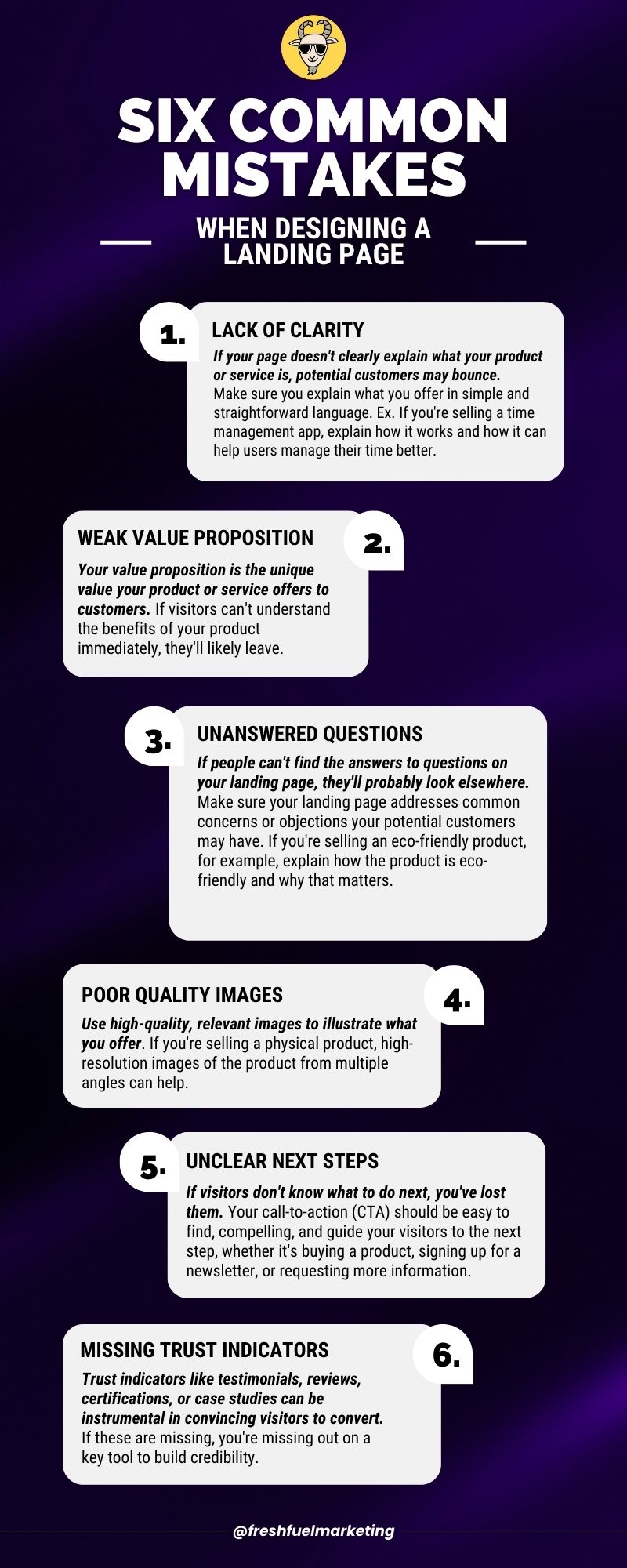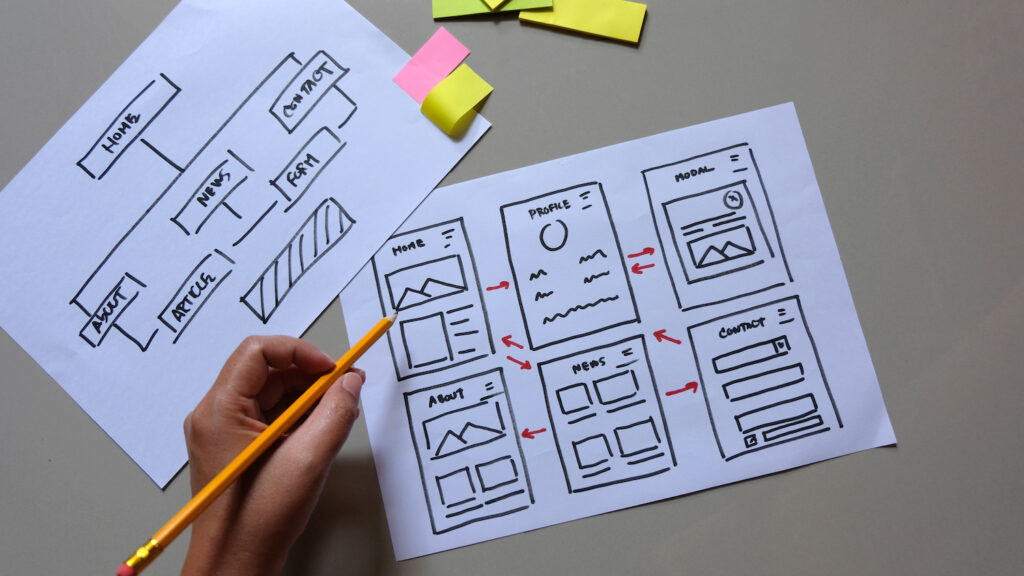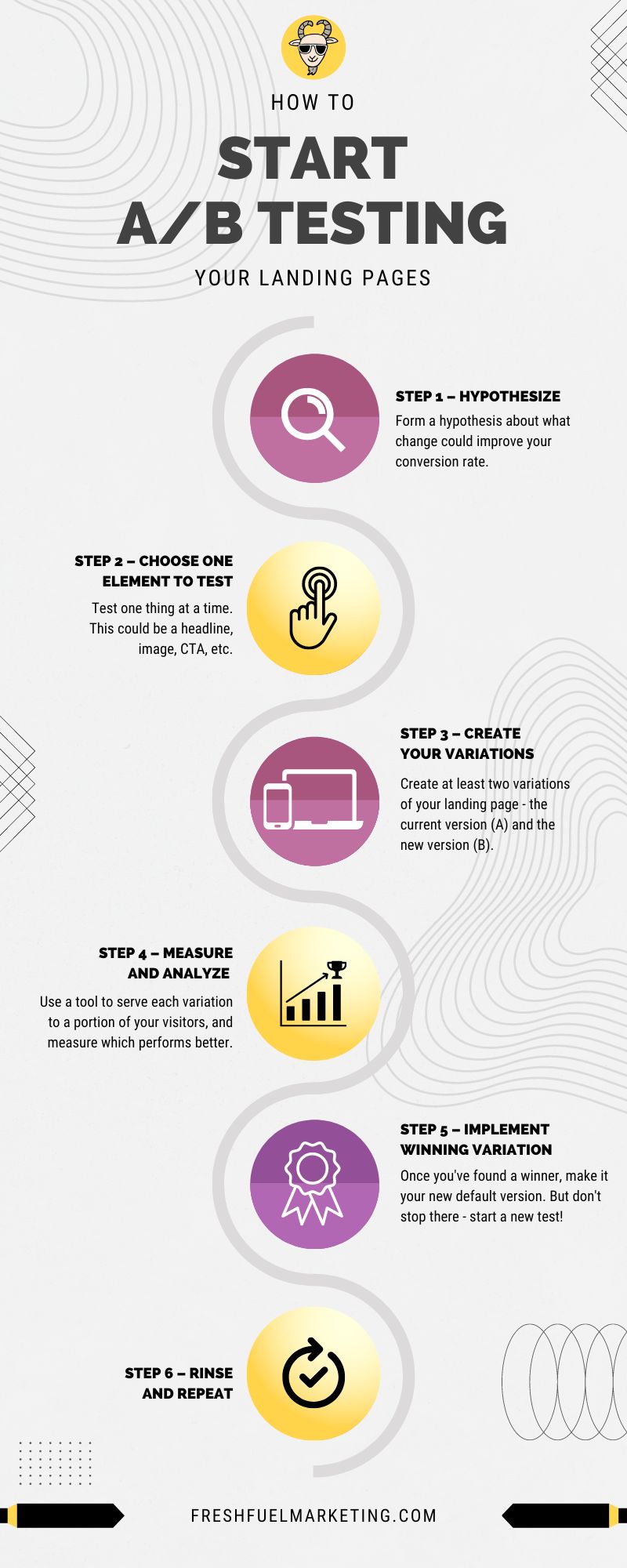Welcome to the realm of landing pages, a pivotal tool in your digital marketing toolbox. If you’re here, you understand their importance, and that’s a great start! If landing pages are new territory for you, don’t worry. We’re here to navigate this terrain together, step by step.
Why all the fuss about landing pages? Think of them as the frontline of your digital marketing campaign. They’re your silent salespeople, working around the clock to convert visitors into customers. In an ever-competitive digital world, a well-optimized landing page can be the turning point for your business.
Date
Categories
However, designing a landing page that genuinely drives conversions can feel like solving a complex puzzle. But don’t be daunted. In this guide, we’ll break it down into manageable pieces, showing you how each one fits into the bigger picture.
So, get comfortable, grab a notepad (or a digital equivalent), and let’s embark on this journey of turning your landing pages into high-performing conversion engines.
Creating an effective landing page can sometimes feel like walking a tightrope. Stray a bit too far in any direction, and you risk falling off. Let’s identify some of the common mistakes that can trip you up:
Lack of Clarity: If your page doesn’t clearly explain what your product or service is, potential customers may bounce. Make sure you explain what you offer in simple, straightforward language. For instance, if you’re selling a time management app, ensure your landing page explains how it works and how it can help users manage their time better.
Weak or Absent Value Proposition: Your value proposition is the unique value your product or service offers to customers. If visitors can’t understand the benefits of your product immediately, they’ll likely leave. Your value proposition should be clear, concise, and compelling.
Unanswered Questions: People have questions, and if they can’t find the answers on your landing page, they’ll probably look elsewhere. Make sure your landing page addresses common concerns or objections your potential customers may have. If you’re selling an eco-friendly product, for example, explain how the product is eco-friendly and why that matters.
Poor Quality Images: Use high-quality, relevant images to illustrate what you offer. If you’re selling a physical product, high-resolution images of the product from multiple angles can help. For a service, consider images showcasing your team at work or the results of your service.
Unclear Next Steps: If visitors don’t know what to do next, you’ve lost them. Your call-to-action (CTA) should be easy to find, compelling, and guide your visitors to the next step, whether it’s buying a product, signing up for a newsletter, or requesting more information.
Lack of Trust Indicators: Trust indicators like testimonials, reviews, certifications, or case studies can be instrumental in convincing visitors to convert. If these are missing, you’re missing out on a key tool to build credibility.
Avoiding these common mistakes is the first step towards creating a landing page that’s not just good, but truly great. Stay tuned for tips and strategies to make your landing pages really shine.


Understanding your target audience is key to crafting a landing page that not only attracts visitors but also converts them into customers. Using examples from our previous projects, let’s walk through how you can achieve this:
For Poppy’s Chocolate, we didn’t conduct traditional surveys or interviews. Instead, we tested various ad creatives, gauging audience response to different videos and product pages. This allowed us to identify what visuals and messaging resonated most with their audience and use these insights to create a high-performing landing page.
In the case of Trivia Spar, we found that adding a reward element (free tokens) upon downloading the app resulted in a significant increase in downloads. We used this insight to enhance the user experience and incentivize app downloads, effectively turning our landing page into a conversion powerhouse.
For Hawkeye Community College’s CDL program, we focused on a specific customer persona – individuals seeking a career change and interested in becoming truck drivers. This precise targeting allowed us to tailor the landing page’s message to resonate with these potential students’ aspirations and needs.
Based on the audience understanding, we then tailored the user experience to match their expectations. For instance, with Trivia Spar, we ensured that the process of getting the free tokens was easy and straightforward. We clearly indicated the steps involved in the process on the landing page, thereby simplifying the user journey and increasing the likelihood of app downloads.
Remember, the key to a high-converting landing page is understanding your audience and meeting them where they are.
Your value proposition needs to shine a spotlight on the unique value you bring to your customers. Here’s how you can craft one that resonates and prompts action:
Begin by emphasizing what sets your offering apart. For Poppy’s Chocolate, the focus was on its local roots and the wide array of creative flavors you won’t find in a regular chocolate shop. The local and unique appeal became a powerful part of their value proposition.
Your value proposition should directly address your audience’s challenges. With Trivia Spar, we highlighted how users could find a solution to boredom, enjoy thrilling competition, and earn rewards all in one app.
Clarity is paramount. Steer clear of industry jargon and ensure your value proposition is in a language your customers understand. For Hawkeye Community College’s CDL program, we clearly explained how the course could catalyze a career change and facilitate the journey to becoming a truck driver.
To enhance your value proposition, consider including real, genuine visuals. In the case of Poppy’s Chocolate, Lynda, the owner, recorded herself on her smartphone making and tasting the chocolates. These videos didn’t just show the product; they offered a behind-the-scenes look into the love and care that goes into each piece of chocolate. This added an element of authenticity and trust that stock images or polished professional photos often lack.


Bringing your value proposition to life through design is the next crucial step. Here’s how you can create a landing page design that encourages conversions:
Keep your landing page uncluttered and easy to navigate. Every element on the page should serve a clear purpose, guiding your visitors toward the action you want them to take.
Make your CTA bold and unmistakable. It should tell visitors precisely what they need to do next and what they stand to gain.
Trust-building elements are vital. Authentic visuals, genuine testimonials, or behind-the-scenes peeks can enhance credibility and foster trust with your audience.
Don’t expect your first landing page version to be perfect. It takes constant testing and iteration to find what truly works for your audience. This could mean tweaking your headline, changing your CTA, or trying out different visuals. The key is to be open to change and ready to learn from each iteration.
Make sure your most critical elements, such as your CTA and key benefits, are prominently placed. Employ design principles like size, color, and contrast to guide visitors’ attention to these elements.
Your landing page should align with your brand’s overall visual and tonal identity. Consistency not only strengthens your brand but also makes your offer more memorable.
In our increasingly mobile world, ensuring your landing page is mobile-friendly is non-negotiable.
Data is your best ally when it comes to optimizing your landing page for conversions. Here’s how you can use data to refine your landing page and drive better results:
The essence of optimization lies in testing. Try out different versions of your landing page (A/B testing) to see which one performs better. You can test elements like headlines, CTAs, images, layout, and more. This process involves systematic changes and careful tracking of how each variant affects conversions.
Use tools like heatmaps and session recordings to understand how visitors interact with your page. Where do they click? Where do they scroll? What do they ignore? This insight can guide your design and content decisions.
Monitor metrics like bounce rate, time on page, and conversion rate to evaluate your page’s performance. For example, a high bounce rate might indicate that visitors aren’t finding what they expect, which signals a need for adjustment.
Don’t underestimate the value of direct feedback from your users. Surveys or feedback forms can provide invaluable insights into what’s working and what’s not from the user’s perspective.
Data-driven optimization is a continuous process. Use the insights you gain from testing and analytics to make informed improvements. Then test again. This cycle of testing, learning, and improving is the key to landing page optimization.


Trust signals are indicators that help build trust and credibility with your audience. These can have a huge impact on the performance of your landing page. Here are some key points:
Authentic testimonials from satisfied customers can significantly increase trust. For example, with Poppy’s Chocolate, featuring genuine customer reviews helped potential buyers feel more confident about their purchase.
Reviews and ratings offer another powerful way to build trust. People often look for feedback from others before making a purchase. Displaying positive reviews and high ratings can sway potential customers in your favor.
If applicable, showcase any industry certifications, accreditations, or awards your business or product has received. This not only shows you are recognized and reputable but also reassures visitors about the quality of your product or service.
Trust badges, like secure payment logos or a Better Business Bureau accreditation, can reassure visitors that their data and transactions will be safe on your site.
If your product or company has been featured in media outlets, include this on your landing page. Media mentions can increase credibility and reassure visitors that your product or service is reputable.
Social proof, such as the number of customers you’ve served or significant achievements, can be powerful trust builders. For example, when promoting Trivia Spar, highlighting the large number of downloads reinforced the app’s popularity and credibility.
Compelling copy is the backbone of any successful landing page. It’s how you convey your value proposition, create emotional resonance, and inspire action. Here’s how to create persuasive copy for your landing page:
Your headline is the first thing visitors read. Make sure it’s attention-grabbing and communicates your value proposition succinctly. For example, with Hawkeye Community College’s CDL program, our headline was “Start a New Career Journey Today!”, emphasizing both the opportunity and immediacy.
Your audience is interested in how your product or service will benefit them, not just its features. Convert your features into benefits that are relevant to your audience. For instance, instead of simply stating that Trivia Spar is a fun trivia game, we emphasized the benefit of gaining knowledge while having fun.
Avoid jargon and keep your copy straightforward and easy to understand. Your goal is to communicate your value proposition and guide visitors towards the desired action as efficiently as possible.
Your CTA should motivate visitors to take immediate action. It should be clear, direct, and tied to a tangible benefit.
Incorporating testimonials, reviews, and case studies in your copy can enhance credibility and give potential customers the reassurance they need to take the next step.
Identify potential barriers to conversion and address them in your copy. This might involve providing more information, offering guarantees, or highlighting customer support.

Writing persuasive copy is an art, but it’s also a science. Test, learn, and adapt your copy based on your audience’s feedback and your landing page performance.

While visually appealing designs are important, it’s essential to remember that the goal of your landing page is to convert visitors into customers or leads.
Here’s how to design with conversion in mind:
A beautiful landing page that doesn’t convert is a wasted opportunity. Prioritize designs that drive conversions over those that merely look good. Sometimes a simple design, like Lynda’s self-recorded videos for Poppy’s Chocolate, can outperform a sophisticated professional shoot.
Ensure your call-to-action (CTA) buttons are easy to spot. Use contrasting colors and clear, action-oriented text to make them stand out.
Design your page with a logical flow that guides visitors from the headline, through your key points, to the CTA. Avoid clutter that can distract or confuse visitors.
Mobile Optimization: With a large proportion of web traffic coming from mobile devices, ensure your landing page is fully responsive and looks good on all screen sizes.
While landing pages typically have minimal navigation, any navigation you do include should be straightforward and intuitive.
A slow-loading page can lose visitors before they even see your content. Optimize your images, scripts, and other elements to ensure your page loads quickly.
With a large proportion of web traffic coming from mobile devices, ensure your landing page is fully responsive and looks good on all screen sizes.
Remember, your landing page is not an art project. It’s a strategic tool for driving conversions. Balance aesthetics with functionality and always design with your end goal in mind.
Creating a high-converting landing page isn’t a one-time task, but an ongoing process. A/B testing can help you continuously improve your landing page by comparing different versions and seeing which performs better. Here’s how to get started:
Hypothesize: Before testing, form a hypothesis about what change could improve your conversion rate. This could be as simple as “Changing the CTA color to red will increase clicks.”
Choose One Element to Test: Start by testing one thing at a time – this could be a headline, image, CTA, or a section of text. Testing too many elements at once can make it hard to identify what’s causing the change.
Create Your Variations: Create at least two variations of your landing page – the current version (A) and the new version (B). The new version should only differ by the element you’re testing.
Measure and Analyze: Use a tool to serve each variation to a portion of your visitors, and measure which performs better. Look for statistically significant results.
Implement Winning Variation: Once you’ve found a winner, make it your new default version. But don’t stop there. Start a new test with another element or a new hypothesis.
Rinse and Repeat: Continue this process of testing, learning, and improving. It’s this constant refinement that leads to consistently high-performing landing pages. With Trivia Spar, for instance, our continual testing and iterating allowed us to find the most effective way to drive app downloads.
Remember, even a small improvement in conversion rate can have a significant impact on your bottom line. A/B testing is a powerful tool to make your landing page work harder for your business.

Once your landing page is live, your work is far from over. Here’s how to ensure its success and optimize its performance over time:
Keep a close eye on key performance indicators (KPIs), such as bounce rate, time on page, and conversion rate, to gauge how your landing page is performing.
Use surveys or user testing to understand how real users interact with your page and what they think of it. This will provide invaluable insights that you can use to make your page even better.
The digital marketing landscape is always evolving. Stay updated with the latest changes in platforms like Google, Facebook, or TikTok, and adjust your strategies accordingly.
Never stop testing and refining your landing page. Always be on the lookout for opportunities to improve and don’t be afraid to make changes based on your findings.
Keep an eye on what your competitors are doing. You might get new ideas or identify gaps in your own page that you can improve.
Regularly update your page to keep it relevant and engaging. This could involve adding new testimonials, updating product information, or even revamping the whole design.
Landing page optimization is a continuous process. Your landing page might be live, but your work in improving it is never truly done. Embrace this ongoing process, and your landing page will continually get better and more effective.
Your landing page is one of your most powerful tools for turning visitors into customers or leads. To wrap things up, here are some key takeaways to keep in mind as you create your own high-converting landing page:
Know Your Audience: Every successful landing page starts with a deep understanding of the target audience. Take time to conduct thorough market research and develop detailed customer personas.
Emphasize Your Value Proposition: Make it clear what sets your product or service apart from the competition and why your visitors should choose you.
Build Trust: Use testimonials, reviews, case studies, and other trust signals to make your visitors feel confident in their decision to choose your product or service.
Create Compelling Copy: Your copy should be clear, persuasive, and focused on the benefits that your product or service provides to the user.
Use Effective Visuals: Images, videos, and other visuals can enhance understanding, evoke emotion, and drive action. Just remember – conversion-focused design over aesthetics.
A/B Test: A/B testing is your friend. Use it to continuously improve your landing page and find what works best for your audience.
Ongoing Optimization: Once your landing page is live, continue monitoring its performance, gathering feedback, and making adjustments as needed.
Remember, a high-converting landing page isn’t built in a day. It takes research, strategic planning, creative execution, and continuous optimization. But with patience, persistence, and these guidelines in mind, you’re well on your way to creating a landing page that drives results.